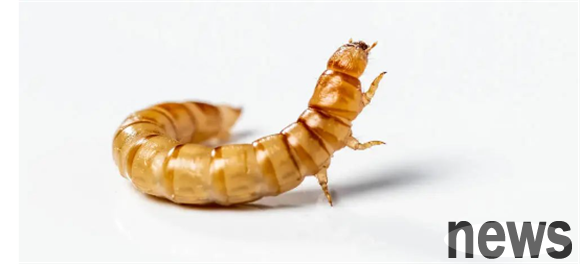Food allergy: Food allergy is a complex clinical clinical disease in dogs and cats, which is difficult to diagnose, treat, and avoid. Food allergies can cause specific dermatitis in dogs and can coexist with atopic syndrome in cats (cat atopic syndr...
Food allergy:
Food allergy is a complex clinical clinical disease in dogs and cats, which is difficult to diagnose, treat, and avoid.
Food allergies can cause specific dermatitis in dogs and can coexist with atopic syndrome in cats (cat atopic syndrome).

Principle Mechanism
Food allergies are the result of clinical diseases caused by the body's failure to immune tolerance to food, resulting in immunoglobulin E (IgE) or non-IgE-mediated immune disorders.
Food allergies are not always a simple allergic reaction, but may be the result of food intolerance, the simultaneous invasion of toxins and pathogens, such as the proliferation of Clostridium perfringens or roundworm infection of the opportunistic pathogen.
Symptoms
Dogs: Mostly urticaria, recurrent pyoderma, and back itching
Cats: mostly urticaria, conjunctivitis, and respiratory symptoms.
Both cats and dogs may have intestinal symptoms.
otitis externa and otitis media may be the result of allergic symptoms.
Some dogs and cats show an allergic reaction to the environment.
Figure is derived from references. After cat food allergies, the diet has eliminated and allergens. The most common food allergen size is between 15-40 kDa (kDa is a unit of molecular weight).
Dogs: Beef, dairy, chicken and wheat are the most common allergens in dogs.
Cats: Chicken, beef and fish are the most common allergens in cats.
Known ingredients:
Specific allergens in beef: bovine serum albumin (Bos d6), phosphoglutaminease, bovine IgG (Bos d7);
Specific allergens in eggs: oocyte protein (Gal d1), ovalbumin (Gal d2), ovariferrin (Gal d3), allergic specific IgE;
Specific allergens in fish: tropomyosin, enolase (Gad m2).
Cross-allergic reaction: A similar cross- or incomplete cross-over allergic reaction to substances with similar structures.
studies have confirmed that there is a serum IgE cross-reaction between chickens and fish;
The serum cross-reaction between birds, ruminants, poultry and grains have also further proved that serum cross-reactions are also proved. Dogs and cats with allergies should have a clear and accurate dietary history, and cross-reactions should also be avoided after diet elimination experiments.
In human food allergies, pollen can cause allergies to food, i.e. pollen-food allergy syndrome (PFAS). Although there are no relevant research on cats and dogs, many dogs and cats have seasonal food allergies, and are prone to sudden allergies to certain foods in seasons with a lot of pollen.
Cross-allergic reactions can make food selection difficult, which may also cause allergic reactions to a completely new protein, or may also cause allergies due to combinations of different food types.
Put aside food allergies, the combination of plants and insects in the environment can also cause cats to be allergic. Tests for diagnosing and adjusting
serum allergen IgE have been under considerable scrutiny, and due to the lack of consistency of results and lack of consistency of clinical food selection results, it has proven unreliable in predicting clinical allergies.
Similarly, serum IgG determination or saliva detection of food-specific antibodies is also not reliable.
Intradermal patch experiments have good negative predictive value and help select proteins for diet elimination experiments, but are not very practical. Allergens require 48 hours of contact with the skin, and the positive predictive value is low. (That is, it is detected that the allergic reaction to a certain substance is negative, the reference value is high, and the reference value is low, and the operation is inconvenient.)
Therefore, diet elimination experiments are the only way to diagnose food allergies. Simply put, it is to exclude foods that may cause allergies one by one. Dietary choices

When choosing food, you should theoretically choose protein and carbohydrate sources that you have never been exposed to before, but in reality, it is very difficult to find such commercial foods. Some people have proposed to use insects as a new source of protein to manage food allergies, which have highly digestible proteins.
However, insects may contain IgE specificity associated with storage mites and dust mites, so it is not a reliable option for patients allergic to these substances.
In commercial foods, even a single new protein is easily contaminated by other products. Since production lines usually produce more than one food, different studies have proved that 33%-83% of these foods can be detected by PCR, ELISA and other methods.
Therefore, finding new proteins and cross-allergic reactions make food choices more complicated, so hydrolyzed proteins are often used instead of new protein choices. Proteins are usually hydrolyzed to molecular weight less than 5kDa, which is not easy to cause allergic symptoms in theory.
Hydrolyzed foods usually contain carbohydrates, which are more difficult to cause allergies than corn flour.
A study conducted an experiment on 10 dogs allergic to chickens and hydrolyzed bird feathers into a hydrolyzed diet with a molecular weight of less than 1kDa. The results showed that the dogs had no clinical symptoms at all. However, if only part of the food is hydrolyzed, then 40% of dogs still experience clinical responses.
Choosing a homemade diet can better avoid external contamination than a commercial diet, but ensuring nutritional balance may be more difficult. However, under the guidance of a nutritionist, homemade diets can be adjusted to meet nutritional needs
Diet elimination experiments
After determining food allergies, diet elimination experiments can be started, using a single meat protein and a single carbohydrate (if necessary) for at least 2 weeks.
If you have allergies in the middle, go back to the new protein diet or hydrolysis diet, and then transition back to the next food you need to try.
85% of dogs will improve within 5 weeks after the diet elimination experiment. Extending to 8 weeks can improve 95% of dogs; cats can achieve 80% of improvement in 6 weeks, and extending to 8 weeks can improve 90% of cats.
Intestinal symptoms often disappear earlier than skin symptoms.
The use of anti-inflammatory drugs can shorten the diet elimination experiments to 4-6 weeks. If the itching does not reappear within two weeks after completely discontinuing the use of prednisolone or Epock.
Explain the relief and persistence of symptoms with caution, especially when cats suffer from environmental and food allergies.
Considering that allergies may have seasonal changes, it is more prone to environmental allergies in summer, so diet elimination experiments will be more efficient in winter.